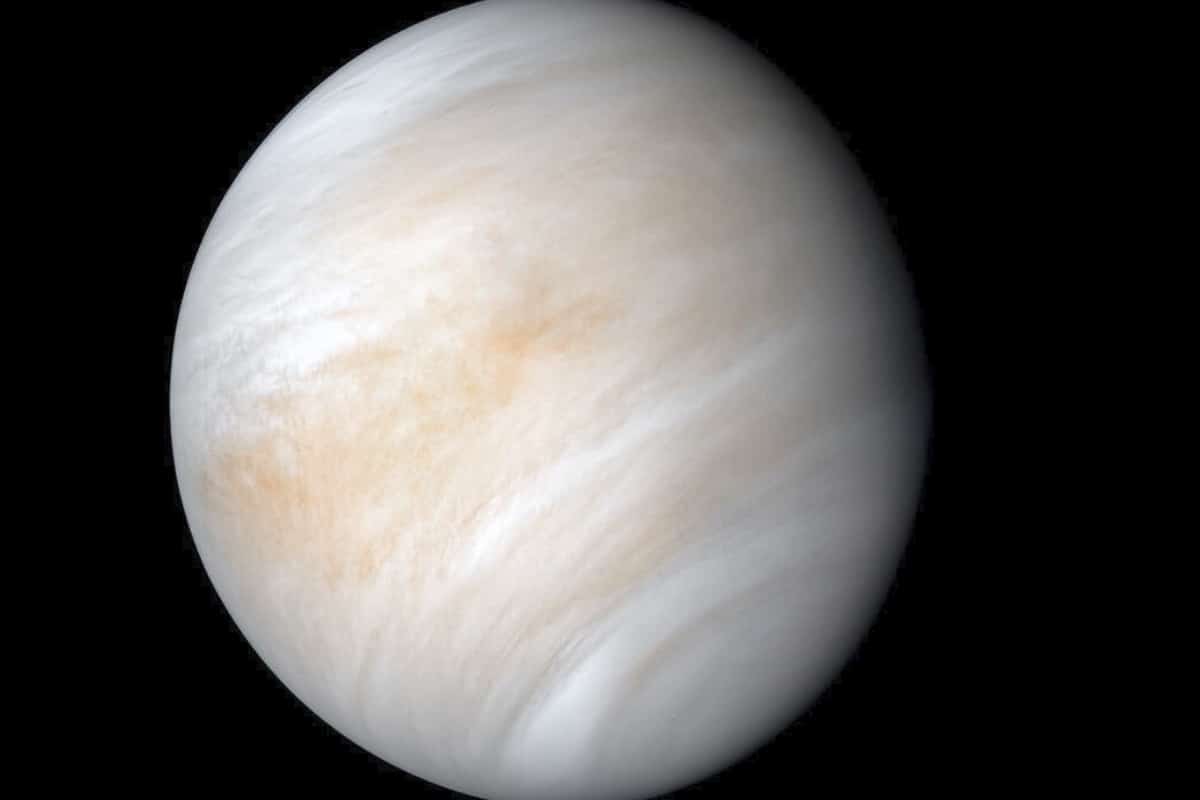
New research suggests that sunlight slumbering through Venus’ cloud cover may enable photosynthesis as we know it here on Earth.
Venus is so unwelcoming at first sight; due to a runaway greenhouse effect, temperatures on the surface are as high as 475 degrees Celsius. We shouldn’t really expect life there. But higher up, about 50 kilometers from the surface, the temperatures are milder. Hence, some researchers do not rule out the possibility of life in the cloud cover of Venus. For example in the form of bacteria. A new study – published in the magazine Astrobiology – cautiously endorses this possibility. Scientists have found indications that sufficient sunlight is available in the atmosphere of Venus to enable photosynthesis.
bacteria
When you think of photosynthesis, you may first think of trees and plants. And they indeed do photosynthesis: the process in which carbon dioxide (CO2) and inorganic nutrients are converted into biomass under the influence of light. But in addition to plants and trees, there are also bacteria here on earth that perform photosynthesis.
On Venus
The idea that such bacteria would also benefit from sunlight in Venus’ clouds is quite surprising, researcher Rakesh Mogul tells. Scientias.nl. “Since Venus is closer to the sun, I would have expected that the amount of solar energy in the clouds of Venus compared to the solar energy that the Earth’s surface receives would be much greater and more dangerous. I was therefore surprised when I saw how mild the solar energy (in the clouds of Venus, ed.) was.” At visible and near infrared wavelengths, the solar energy in Venus’ cloud cover was even found to be comparable to the solar energy on Earth’s surface. Meanwhile, the (dangerous) UV radiation in the cloud cover was much lower than here on earth.
During the night
The researchers base their conclusions on an analysis of data collected in the last century by probes that descended through Venus’ cloud cover, taking all kinds of measurements along the way. Based on those measurements, the researchers calculated how sunlight seeps through the cloud cover. And then it turns out that there is enough sunlight available to enable photosynthesis in the clouds. But not only that; the research also suggests that any bacteria living in Venus’ cloud cover can continue to photosynthesize even at night when sunlight is not available. “The surface and atmosphere of Venus are very warm,” explains Mogul. “Surface temperatures are around 730 Kelvin (450 degrees Celsius, ed.). And that heat releases energy in the form of photons or light particles, which then move up through the clouds and can be detected by space probes. We have now compared the number of photons measured by probes on the night side of Venus (i.e., the side not illuminated by the sun, ed.) with the amount of photons in environments on Earth where microbes receive very little light. can survive.” Consider, for example, terrestrial photosynthesizing bacteria that live around hydrothermal vents, hundreds or thousands of meters below sea level. “And where geothermal emissions enable photosynthesis.” Or think of microbes that live in the Black Sea at a depth of 120 meters. “And simply have to make do with very small amounts of solar energy.”
Comparing these environments, in which photosynthesizing microbes actually manage to survive against the odds, with the nighttime cloud cover of Venus leads to an interesting conclusion. “Our calculations show that the photon current density in the photosynthetically active light spectrum on the night side of Venus is much greater than it is in these regions on Earth. Since Venus is continuously warm, it means that light energy is constantly flowing from the surface and the atmosphere into the clouds.” And for a possible microbiome in the clouds of Venus, it means that there is light energy available day and night.
Water
But of course, light alone won’t save any microbes in Venus’ cloud cover. They also need water. Unfortunately, a recent study shows that there is very little water in the clouds of Venus and far too little for the origin and maintenance of life as we know it. But Mogul and colleagues took another look at that, too, and there is a glimmer of hope. Their analysis hints at a slightly different chemical composition of the aerosols that make up the cloud cover, which creates more room for water.
And that makes such a microbiome floating in the air no longer inconceivable. “There is sufficient light energy, the temperature and pressure in the clouds are good and various chemical models and studies indicate that chemical energy can also be found in the clouds.” But that certainly does not prove that life can be found, Rogul emphasizes. However, one thing is certain after this research: the label ‘by definition unlivable’ no longer fits Venus. “Venus is an interesting celestial body for astrobiology.”
Source material:
“Study Finds Photosynthesis in Venus’ Clouds Could Support Life” – California State Polytechnic University
Interview with Rakesh Mogul
Image at the top of this article: NASA / JPL-Caltech